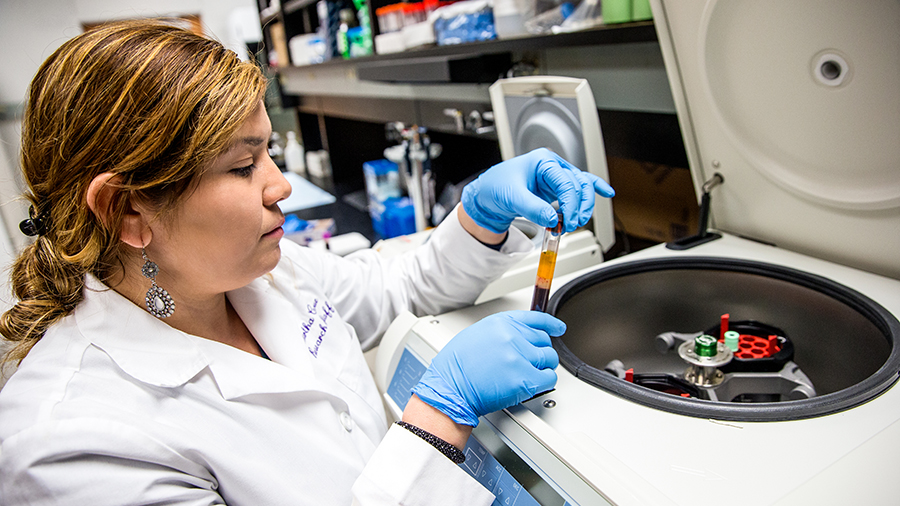
Beyond the pharma supply chain crisis: Action and impact
 Supply chain disruptions have become commonplace: natural disasters, international trade tensions, cyberattacks, and global pandemics are just a few of the shocks that can immobilize pharma companies.1 With cargo ships waiting to unload in the largest ports around the world, energy prices driving inflation, and shortages of active pharmaceutical ingredients (APIs) and essential chemicals, there is no quick fix for a rapid return to business as usual. The supply chain crisis is a wake-up call to transform, reimagine, and rebuild new pharma supply chain models.
Supply chain disruptions have become commonplace: natural disasters, international trade tensions, cyberattacks, and global pandemics are just a few of the shocks that can immobilize pharma companies.1 With cargo ships waiting to unload in the largest ports around the world, energy prices driving inflation, and shortages of active pharmaceutical ingredients (APIs) and essential chemicals, there is no quick fix for a rapid return to business as usual. The supply chain crisis is a wake-up call to transform, reimagine, and rebuild new pharma supply chain models.
Additionally, the White House Executive Order 14017 on supply chains, the FDA Drug Supply Chain Security Act (DSCSA), and the increased need for Zero Trust Security to combat pharma cybersecurity are all severely testing the readiness of the industry.
Visibility—Keeping pharma supply chains resilient, diverse, and secure
The White House Executive Order 14017 states that supply chains need to be resilient, diverse, and secure to ensure our economic prosperity and national security.2
The US Food and Drug Administration (FDA) analysis shows3 that:
- The number of ongoing drug shortages has been increasing since 2017.
- Shortages are lasting longer, in some cases more than eight years.
- Products in short supply include central nervous system medications, antimicrobials, cardiovascular medications, ophthalmic solutions, chemotherapy agents, and essential healthcare products, such as hand sanitizer.
- Of 120 medications—118 from the FDA’s 2020 Essential Medicines—only 60 have domestic API facilities.4
The E.O. 14017 of the White House calls for pharma to boost local capabilities, foster international cooperation, and build emergency capacity. What makes Microsoft unique is our commitment to industry specific standards and communities, such as the Open Manufacturing Platform, the OPC Foundation, the Digital Twins Consortium, and our innovative partner ecosystem, coupled with composable and extensible solutions that seamlessly connect people, assets, workflows, and businesses processes. Our technology is giving businesses more intelligence and visibility than ever before and making operations more adaptable.
Microsoft solutions such as Azure, Dynamics 365, Dynamics 365 Supply Chain Management, and Power Platform are built to deliver high-end visibility across supply chains and enhance planning and optimization.
Blue Yonder, named Microsoft partner of the year for 2021, provides a powerful end-to-end platform for intelligent digital supply chain planning & operations. Their AI-powered Luminate Platform, built on Microsoft Azure, provides real-time end-to-end visibility, and not only identifies potential disruptions to supply chains, but also uncovers untapped opportunities for businesses. Blue Yonder shows real results in reducing inventory expenses up to 30 percent, has a forecast accuracy of 95 percent, reduced out-of-stock rates by up to 30 percent and increased planner efficiency up to 60 percent5. In the midst of the COVID-19 pandemic, when transparency, proactive risk detection and mitigation were critical attributes, Blue Yonder customers like BD leveraged LuminateTM Control Tower to handle challenges getting their medical supplies into the hands of their end customers. It enabled end-to-end visibility across their supply chain driving both supply chain performance and cost savings.
Pharma supply chain regulations, planning, and optimization
The FDA’s Drug Supply Chain Security Act (DSCSA), a single federal framework for tracing prescription medications through the supply chain, is challenging the pharmaceutical sector to reach data transaction targets by November 2023.
A study by the Healthcare Distribution Alliance (HDA) reveals6 that:
- Most pharma companies are not prepared to comply with DSCSA regulations.
- 49 percent of companies are not currently in the process of connecting with distributors.
- 57 percent have no successful connections in a production environment.
- 59 percent are not sending data to distributors.
Obstacles hampering the implementation of new FDA standards include the need for internal IT upgrades from the line, packaging, aggregation, and internal resolution.
Companies like Accenture, Far Eye, PWC, ToolsGroup, CH Robinson, KPMG, and o9 Solutions choose Microsoft cloud-based supply chain solutions for performance transparency and governance. o9 Solutions—recently named one of America’s 500 fastest-growing companies by the Financial Times—uses Microsoft Azure Synapse Analytics across its leading platform7.
o9 Solutions supplies Samsung Bioepis Co., Ltd. with a next-generation platform on Microsoft Azure for the management of its biopharmaceutical product manufacturing and supply chain. Focusing on optimizing development, clinical trial management, and regulatory registration, the o9 Solutions platform—integrated into Samsung Bioepis Co. Ltd.’s existing enterprise resource planning (ERP)—drives efficiencies across the supply chain.
Pharma supply chain trust
Research from the Cybersecurity and Infrastructure Security Agency Cybersecurity (CISA) shows8 that:
- 93 percent of healthcare organizations experienced a data breach in the past three years.
- The pharma industry has lost $14 billion through intellectual property cybertheft worldwide.
- The pharma industry’s average total cost of a data breach is more than $5 million.
- At almost $11 million, this sector has one of the highest costs of remediating the breach.
Microsoft is delivering security for all in a Zero Trust world and innovating in identity, security, and compliance, to provide integral security protection that meets today’s most challenging security demands. Our security solutions integrate directly into all our suite of products and services.
Reimagining pharma supply chains
Microsoft has a vision for the future of supply chains—and solutions like Microsoft Cloud for Manufacturing—to make that innovation real. The pharmaceutical industry will continue to grow. In the past two decades, the worldwide value of pharmaceutical goods traded has grown six-fold, from $113 billion in 2000 to $629 billion in 2019. Life science companies can embrace new technologies that help improve digital operations while optimizing the value chain for customer outcomes.
An enhanced infrastructure helps ensure better inventory management and cost savings, and it will help close the gap between demand and fulfillment. Transformative technologies can also help to shift business paradigms toward sustainability. They can help businesses better understand and minimize the impact of business operations on the planet.
Furthermore, technology can enable companies to fulfill a responsibility to think sustainably and embrace and manage change as an opportunity for growth. At Microsoft, we have reimagined the supply chains of the present and we’re on a journey to build the supply chains of the future. We will continue to support the sector’s growth through our mission to transform and build trusted, sustainable, and intelligent supply chains.
1 Foster, Tacy, Parag Patel, and Kathrin Skiba. “Four Ways Pharma Companies Can Make Their Supply Chains More Resilient.” McKinsey & Company, October 7, 2021. https://www.mckinsey.com/industries/life-sciences/our-insights/four-ways-pharma-companies-can-make-their-supply-chains-more-resilient.
2 “Building Resilient Supply Chains, Revitalizing American Manufacturing, And Fostering Broad-Based Growth: 100 Day Reviews under Executive Order 14017.” The White House, June 2021. Accessed October 17, 2021. https://www.whitehouse.gov/wp-content/uploads/2021/06/100-day-supply-chain-review-report.pdf.
3 “FDA Drug Shortages: Root Causes and Potential Solutions, 2019.” U.S. Food and Drug Administration, FDA, 2019. Accessed October 17, 2021. https://www.fda.gov/media/132058/download.
4 “EPCIS Implementation Benchmarking Survey.” HDA Research Foundation, 2021. https://www.hda.org/resources/epcis-implementation-benchmarking-survey
5 “Blue Yonder Supply Chain Planning and Operations.” App Source, Microsoft. https://appsource.microsoft.com/en-us/product/web-apps/jdasoftware-global.by_supply_chain_planning-operations.
6 “EPCIS Implementation Benchmarking Survey.” HDA Research Foundation, 2021. https://www.hda.org/resources/epcis-implementation-benchmarking-survey
7 o9 Solutions Case Study.” Microsoft. Accessed October 17, 2021. https://partner.microsoft.com/en-us/case-studies/o9-solutions.
8 Spaniel, Drew. “Safeguarding the COVID-19 Vaccine: A Case Study in Global Supply Chain Security.” ICIT, Institute for Critical Infrastructure Technology. https://icitech.org/covid-19-vaccine.
9 UN Comtrade Database. United Nations, February 2020. http://comtrade.un.org.




